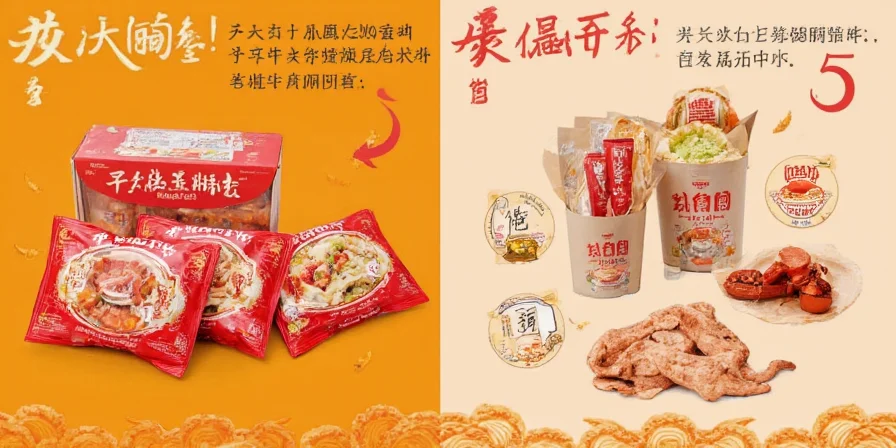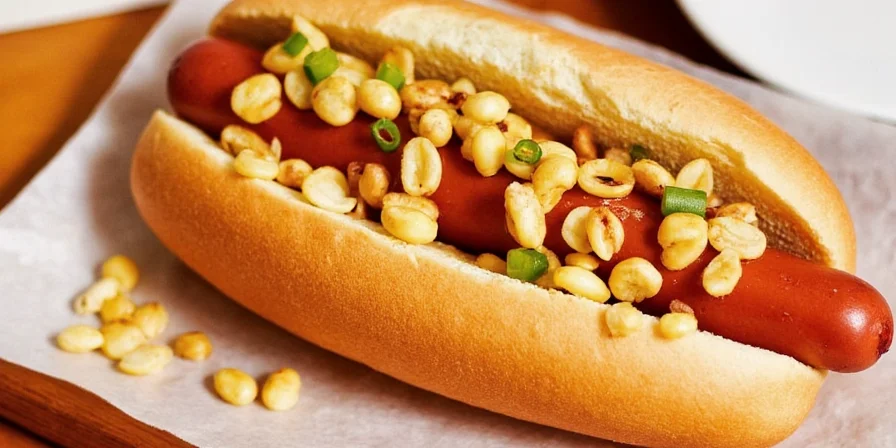The New York style hot dog — greasy, satisfying, and iconic. It’s the kind of street food that makes you want to slap your knee and shout ‘That’s the stuff!’ But beneath that humble bun lies a world of carefully chosen spices and flavor layering techniques that make this frankfurter so legendary.
Designed for food enthusiasts, home cooks, and street food vendors, this guide delivers actionable insights into spice selection and condiment chemistry that transform ordinary hot dogs into authentic New York street food experiences. Whether you're a professional chef or a weekend griller, you'll gain practical techniques to master flavor balance.
Grab your relish spoon and let’s dive in!
Table of Contents
- The Anatomy of a New York Style Hot Dog
- Spice Spotlight: What Really Goes Into That Bun?
- Relish, Sauerkraut, Onions — Oh My! A Condiment Comparison Table
- Pro Tips for the Ultimate Frankfurter Experience
- Why This Matters in Global Spice Traditions
- Conclusion: The Secret to the Soul of the Street Dog
The Anatomy of a New York Style Hot Dog
You might think it’s just a sausage and a bun — but nope, it’s a culinary symphony of textures and flavors. Let’s break down each component:

- The Bun: Steamed to soft perfection, never toasted. Gives that pillowy contrast to the juicy dog inside.
- The Frankfurter: Usually beef-based, boiled or steamed (not grilled), with just the right snap when bitten into.
- Condiments: Mustard is non-negotiable. Relish comes next, followed by optional sauerkraut or grilled onions.
- Spices: Hidden heroes that elevate the flavor from simple to sublime.
Spice Spotlight: What Really Goes Into That Bun?
While most folks don’t realize it, the hot dog itself is packed with spices long before it hits the cart. Here are the big players:

- Mustard Seed: Ground and mixed into the meat, giving a subtle tangy warmth.
- Paprika: Adds mild sweetness and color depth.
- Garlic Powder: For that unmistakable savory kick.
- Allspice: A secret ingredient in many traditional recipes, lending earthy warmth.
- Sodium Nitrite: Not a spice per se, but critical for preserving color and adding that “snap” to the casing.
Relish, Sauerkraut, Onions — Oh My! A Condiment Comparison Table
What makes the New York style dog unique is its condiment combo — and believe it or not, each topping brings its own spice-like complexity. Here’s a quick comparison:
| Condiment | Base Ingredient | Spice Level | Flavor Profile | Texture |
|---|---|---|---|---|
| Yellow Mustard | Vinegar, turmeric, mustard seeds | Mild Heat | Sharp, tangy, slightly bitter | Smooth, creamy |
| Green Sweet Relish | Chopped cucumbers, vinegar, sugar | Very Mild | Sweet, tart, slightly briny | Chunky, moist |
| Sauerkraut | Fermented cabbage, salt | None (but bold) | Sour, umami-rich, fermented funk | Crisp, fibrous |
| Grilled Onions | Caramelized onions | None | Sweet, rich, deeply savory | Soft, jammy |

Pro Tips for the Ultimate Frankfurter Experience
If you’re serious about mastering the art of the New York style hot dog, here are some pro-level tricks and tips that’ll take your dog from basic to boss:

- Don’t Boil Your Buns Forever: Steam them briefly — too much water and they get soggy. Aim for warm and pliable.
- Use Fresh Mustard: Opened jars can lose potency. Opt for small bottles or refrigerate after opening.
- Toast the Relish Slightly: Lightly heating green relish releases more aroma and enhances sweetness.
- Add a Pinch of Cayenne to Sauerkraut: Just a tiny sprinkle adds heat without overpowering the sourness.
- Try Different Frankfurters: Explore regional variations like Chicago-style dogs or Coney Island dogs for inspiration.
Why This Matters in Global Spice Traditions
The New York style hot dog is more than an American classic — it’s a microcosm of how global spice traditions shape our everyday foods. Consider these insights:

- Migration of Flavors: German immigrants brought their knackwurst and bratwurst traditions, which evolved into the American hot dog.
- Preservation Meets Flavor: Spices like allspice and mustard were originally used for preservation before refrigeration was widespread.
- Cultural Fusion on a Bun: The combination of European meats and American condiments created a new identity entirely — street food at its finest.
Urban Innovation Perspective: The compact spice profile of NYC hot dogs emerged from street vendors' spatial constraints. Limited cart space forced hyper-efficient flavor layering where each ingredient serves dual purposes—like allspice preserving meat while harmonizing with relish. This urban adaptation proves how environmental limitations spark culinary ingenuity, turning practicality into iconic taste.
Conclusion: The Secret to the Soul of the Street Dog
So there you have it — the hidden spice story behind the New York style hot dog. From the subtle warmth of allspice in the meat to the tangy brightness of mustard and relish, every element plays a role in creating that unforgettable taste of the city that never sleeps.

Whether you’re recreating this classic at home or just appreciating it from a distance, remember: sometimes the best spices aren’t the loudest — they’re the ones that work quietly to bring harmony to every bite.
Now go forth and savor your next street dog like a true spice connoisseur.
Frequently Asked Questions
What is the most essential condiment for a New York style hot dog?
Yellow mustard is non-negotiable. It provides the sharp tang that cuts through the richness of the frankfurter, creating the foundational flavor profile without which the dog loses its signature NYC identity.
Why are New York style hot dogs boiled instead of grilled?
Boiling preserves the casing's signature 'snap' and ensures even cooking without charring. This method aligns with street vendors' need for speed and consistency in high-volume settings, maintaining texture integrity that grilling often compromises.
Can I replicate authentic street cart results at home?
Absolutely. Use quality beef frankfurters, steam buns for 30 seconds, and layer condiments in precise order: mustard first (to protect the bun from sogginess), then relish, followed by optional sauerkraut or onions. Never skip the steaming step for bun authenticity.
What makes allspice a critical but invisible ingredient?
Allspice creates subtle flavor bridges between savory meat and tangy condiments. Its clove-cinnamon-nutmeg notes work at threshold levels—detectable only when missing—demonstrating how restrained spice application achieves maximum impact in street food design.











 浙公网安备
33010002000092号
浙公网安备
33010002000092号 浙B2-20120091-4
浙B2-20120091-4